Understanding the materials
What is the difference between a laminate and a parquet board, what are the advantages and disadvantages of each multi-layer coating, and what to choose? To answer all these questions, you should initially figure out what parquet and laminate are.
What is a parquet board?
Surely, having heard the phrase "parquet board", you presented a type-setting block parquet - small boards laid with a herringbone. However, the difference between these floors is enormous:
- natural parquet flooring (parquet) is a solid sawn block of valuable wood species;
- parquet board is a layered cake, which includes not only high-quality wood species, but also fiberboard, as well as a lacquered protective layer.
The difference from expensive parquet is also in size: the parquet board has a maximum length and width of 20 * 250 cm (instead of 9 * 50 cm). The thickness of the board is 14 mm (instead of 18-22). And the last difference is the lock connection. In fact, the parquet board looks more like a laminate - it is multi-layer, it is also easy to install.
The appearance, service life and other characteristics of the board depend on the composition. In the classic version, it consists of three components: the bottom layer of coniferous wood ensures durability, the middle layer is laid perpendicularly, serves as a connector (made of solid pine or birch), the upper protective layer is responsible for wear resistance (oak, teak, wenge, ash, beech) ...
To create a slab of increased durability, the transverse strips are replaced with a more stable modern material - HDF. It contributes to sound insulation and better tolerates a humid environment, temperature changes.
The finished factory coating gives an advantage over the parquet planks: unlike the natural brother, the parquet board is still covered with varnish, oil, impregnation or other protective compound at the factory. This stage provides resistance to abrasion, mechanical stress, moisture, ease of use and cleaning.
What is laminate flooring?
The laminated coating is also multilayer, but it is not based on wood veneer, but on fiberboard / chipboard. Standard lamella layers:
- Lower. The task is to protect against water, impart rigidity. The backing is made of melamine.
- Main. The task is the link. From fibreboard or chipboard.
- Decorative. The task is to imitate wood, stone or any other texture, pattern, color. Consists of printed paper.
- Upper layer. The task is to protect against moisture, mechanical damage, burnout. Achieved by acrylic or melamine resin.
The quality of each of the layers and its precise composition influences the grade of the resulting laminate. After a series of tests for strength, sound insulation, water resistance and abrasion, the laminate is classified as household (starts with number 2) or commercial (from number 3). The second, of course, is of higher quality, but the price of such a floor covering is also higher.
Pros and cons
We figured out what a parquet or laminate floor is, it's time to consider the advantages and disadvantages of each option. Let's start with a parquet board:
| pros | Minuses |
|---|---|
|
|
Let's move on to the laminate floor:
| pros | Minuses |
|
|
Differences between laminate and parquet boards
To make the right choice, it is not enough to consider the coatings separately from each other. They need to be compared for each item.
Comparison of soundproofing
Natural wood is a sound-absorbing material, therefore, when choosing a parquet board, you do not have to additionally lay noise insulation in the room. Laminate, on the other hand, increases the volume of the sounds produced and needs a special foam or cork backing.
Important! Choosing according to the properties of noise absorption, give preference to a parquet board.
Assessing impact resistance
Softwood, even when coated with a protective varnish, cannot withstand dropping heavy objects. It also squeezes easily under heels, furniture legs. The top of the laminate is a hardened resin that makes this material more durable. It does not squeeze through loads and is practically not afraid of falls and bumps.
Important! In comparison of strength, laminate wins - its surface is harder.
Which coating is best for temperature extremes?
Laminate and parquet floors differ in manufacturing technology and materials, so temperature changes are tolerated differently. Laminated lamellas can flake, swell, crack due to sudden changes or severe frost. Parquet planks are more stable - thanks to the technology of transverse laying of layers, they practically do not change when passing from a cold state to a warm state and vice versa.
Important! In an unheated room, it is better to lay a parquet board.
Comparison of moisture resistance
Laminate and parquet boards should not be laid in excessively damp rooms (baths, saunas), they are equally poorly tolerant of water. As for moisture, there is not much difference: high-quality coatings cope with it equally well.
Important! When choosing parquet and laminate for this characteristic, pay attention to the quality of the boards.
What is more harmful than laminate or parquet board?
Parquet lamellas are certainly more environmentally friendly, especially if we are talking about inlaid planks made of pure wood, without the use of HDF. The laminate contains controversial substances like melamine. However, studies have proven its harmlessness to humans, so its use in apartments or public places is absolutely safe.
Important! The most harmless option is a parquet board made of wood.
Appearance
In this matter, everyone decides for himself: a floor made of noble wood looks more expensive, but a laminated one has more choice of colors.
Important! Decide which is more important: high cost or a large assortment of prints.
Who has a longer lifespan?
The maximum lifespan of parquet flooring is 12-20 years, laminated with proper care is 10 years.
Important! The parquet board will last 1.5-2 times longer.
Installation difference
There are practically no special differences in laying - the strips are attached to each other with the help of lock joints. To prevent the floor from starting to play, it is better to lay both coatings on a substrate.
Important! The main difference is not in the type of coverage, but in the quality of the locks.
Is there a difference in the maintenance and repair of coatings?
Frequent wet cleaning, the use of abrasive and aggressive products is contraindicated for the parquet floor. Cycling may be required after prolonged use. Laminate can be wiped with a damp cloth even every day, but also without abrasives and chemicals - they corrode the protective film.
Repairing a damaged part in any case is almost impossible (polishing can rarely help parquet) - only replacing the board.
Important! Laminate flooring is less demanding to maintain.
What is more expensive?
Of course, natural wood of valuable species is worth more. In this case, the most expensive is a single-strip board from an array. The price of laminate flooring varies from class, you can find an option for every taste and budget.
Important! The most inexpensive option is household laminate.
Comparative table of characteristics
Summarize:
| Parquet board | Laminate |
|---|---|
|
|
What to choose in the end?
We told everything about laminate and parquet boards, what is the difference between these coatings. It remains to make a choice.
- Both options are suitable for the bedroom and the nursery.
- A parquet board will look more profitable in the living room - it will emphasize the high cost of repairs.
- For the kitchen, a high-quality commercial laminate will be a better choice - it is more resistant to abrasion, is not afraid of wet cleaning.
- In the bathroom, it is better to abandon both options in favor of something more moisture resistant.
- In the country, especially unheated, parquet is also better - it is superior in stability to changes in humidity and temperature.
Parquet and laminate flooring have a lot in common, but each has its own advantages and disadvantages. Make your choice consciously and your floor will serve you for a long time!

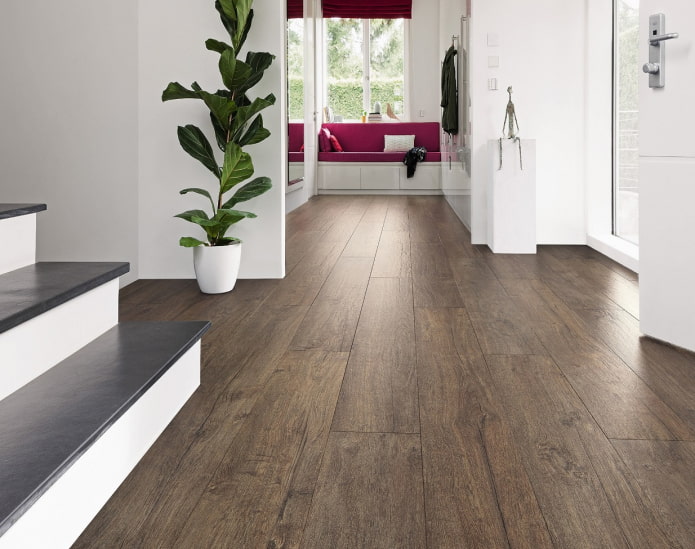
 10 practical tips for arranging a small kitchen in the country
10 practical tips for arranging a small kitchen in the country
 12 simple ideas for a small garden that will make it visually spacious
12 simple ideas for a small garden that will make it visually spacious
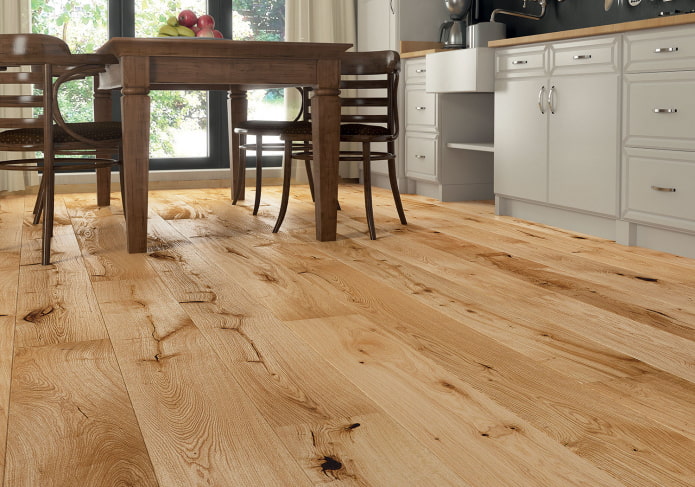
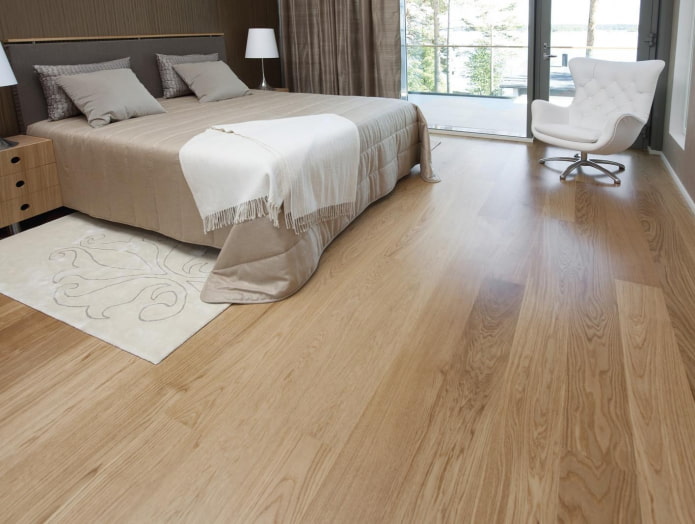
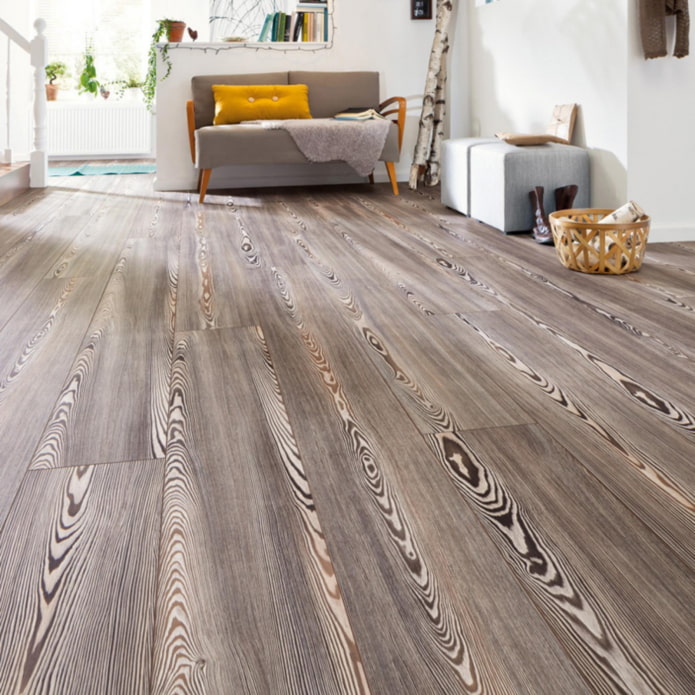
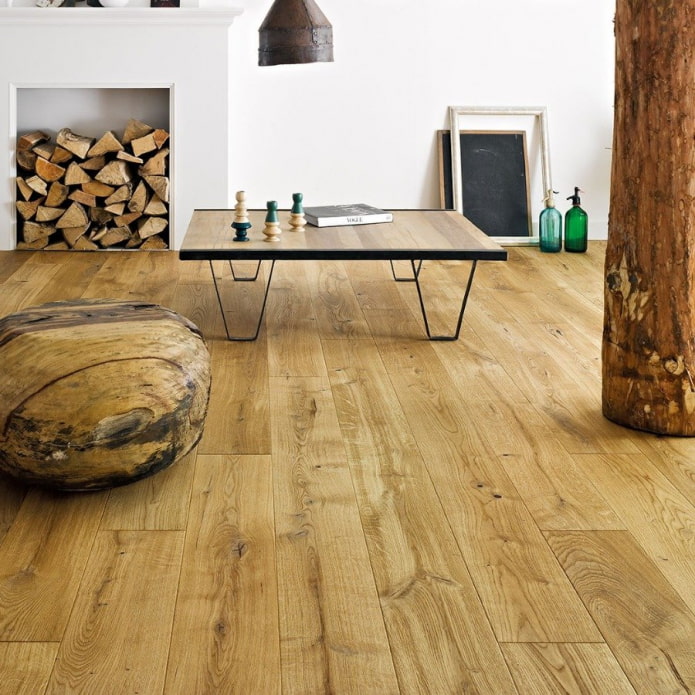
 What is better not to do it yourself during the repair?
What is better not to do it yourself during the repair? Bloated linoleum: how to fix it without disassembly
Bloated linoleum: how to fix it without disassembly The worst decisions in apartment renovation
The worst decisions in apartment renovation  Installation of ceiling tiles: choice of materials, preparation, order of work
Installation of ceiling tiles: choice of materials, preparation, order of work How to glue a ceiling plinth to a stretch ceiling?
How to glue a ceiling plinth to a stretch ceiling? Ceiling plinth for stretch ceiling: types, recommendations for selection
Ceiling plinth for stretch ceiling: types, recommendations for selection